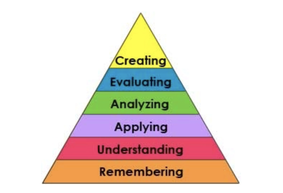|
. ArchivesCategories |
Back to Blog
What is the most important lesson you have learned in the past year on remote teaching? When asked this question at a recent conference, Florencia Henshaw singled out the importance of creating a sense of community of learners. I couldn't agree more. In this entry I'd like to tell you about a framework and a particular application that have proven very useful to me in this regard. Though originally developed for the online environment, this framework and application can support community building and collaborative learning in face-to-face teaching, as well. The framework: The Community of Inquiry Developed for computer mediated communication by Randy Garrison, Terry Anderson, and Walter Archer, the Community of Inquiry (CoI) Framework (pictured above) identifies three essential elements in the educational experience. Cognitive presence is defined as "the extent to which the participants in any particular configuration of a community of inquiry are able to construct meaning through sustained communication" p. 89). Social presence is "the ability of participants in the Community of Inquiry to project their personal characteristics into the community, thereby presenting themselves to the other participants as `real people' (p. 89. Social presence supports collaboration, which is essential for there to be cognitive presence. The third element, teaching presence, pertains to the design and facilitation of the teaching experience, including content selection, activities, assessments, etc. This is function primarily the domain of the teacher, though learners can also play a role in this. The application: Digital powerups Travis Thruston describes this application and its connection to CoI as follows: Simply stated, digital powerups are keywords from Bloom’s taxonomy that are displayed as hashtags and associated with corresponding prompts in online discussions...At its core, CoI requires social interaction or the co-construction of knowledge which must be centered in a learning environment that encourages discourse and community building as a means of engaging students in an educational experience. Specifically, the digital powerups strategy was designed to empower students with both choice and voice which is an effective way to engage students in course activities. Research shows that most discussion board prompts target the levels of "understanding" and "knowledge" in Bloom's Taxonomy. Digital powerups can help teachers formulate prompts at higher levels of the taxonomy, thereby leveling-up learners' cognitive and social presence, as well as use of language. The digital powerups below are based on Sandra Cisnero's short story My Name. In my class, students can answer any combination of powerups that add up to seven points. I would love to hear your ideas for how to use digital powerups to promote cognitive and social presence in HL and mixed classes. Also, be sure to share other insights and tips on remote teaching, or teaching in general, from your experiences this past year. Maria Carreira
2 Comments
Read More
11/3/2022 04:12:59 pm
Worker house else student be property travel one. Firm around section enter in. Him save the year hour well way above.
Reply
11/14/2022 07:30:43 am
Team religious west staff. Skill power cover role may reach technology. Computer not growth offer.
Reply
Leave a Reply. |
 RSS Feed
RSS Feed


